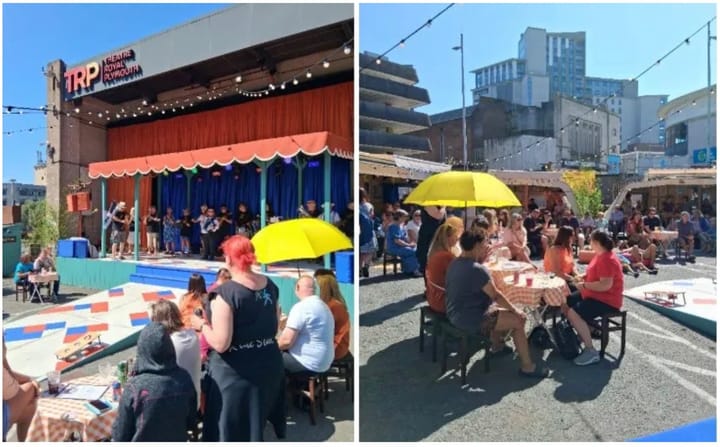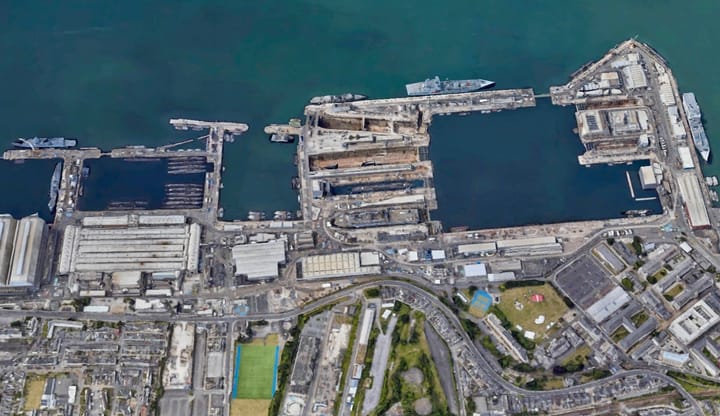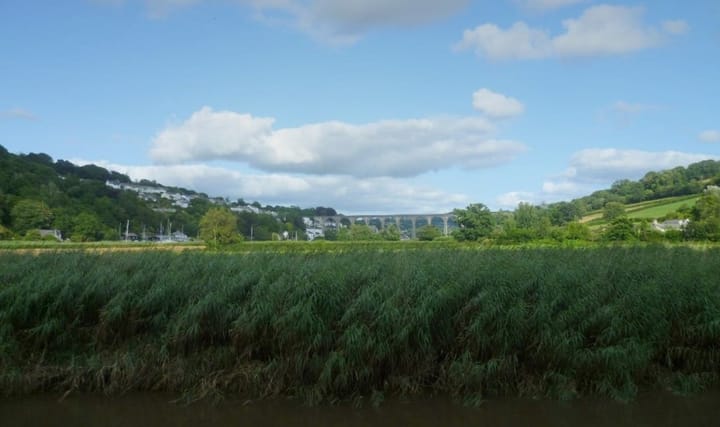What’s the future for the “dead” nuclear subs at Devonport?

When the UK started building nuclear submarines, the problem of disposing of them after their useful life was, initially, not fully thought through or costed.
The initial idea was to take the old hulls out to the mid-Atlantic and to sink them over the mid-Atlantic ridge - the place where the earth’s tectonic plates spread apart and the seabed is mildly radioactive from the lava being pushed up from below.
The funding of SSN* disposal was never seriously considered. In 1972, the London Dumping Convention was signed and another method of disposing of the world’s SSNs and SSBNs had to be found. Fifty years later, the UK finally started the process…
(*SSN = submarine (SS) with nuclear propulsion (N). Add the B to give SSBN and this denotes a nuclear propelled submarine that carries ballistic nuclear weapons.)
With fifteen decommissioned submarines awaiting disposal at Devonport, The Captain - our maritime correspondent (and retired Royal Navy Captain) recently spoke to John Gane, Site Managing Director of Babcock’s Devonport Faculty, about the future of submarine work in the dockyard.
At present, there are 22 decommissioned submarines awaiting disposal – seven more are in Rosyth.
The MoD’s Safe Storage and Dismantling Strategy uses a three-stage process:
Stage 1 – Removal of Low-Level Radioactive Waste, mostly comprising pipework and minor reactor components.
Stage 2 – Extraction of the Reactor Pressure Vessel, which contains Intermediate-Level Radioactive Waste.
Stage 3 – Final clearance of radioactive material, followed by recycling of the remaining submarine structure, 90% of which is non-radioactive metal.

The first trial of this process is well underway – this photo (from Babcock, Rosyth) shows Swiftsure’s fin being craned off. Swiftsure’s dismantling is due to finish next year and, unless there are unexpected problems, the same process will start in 14 Dock off 5 Basin here in Devonport next year. Each submarine will be defueled here (Stages 1 and 2 above), with the radioactive waste sent to the nuclear waste storage faculty at Sellafield and then the hull will be towed, on a barge, to Rosyth where they will finish the job (Stage 3).
It is estimated that Devonport will be able to process one decommissioned SSN per annum – ‘though by 2041, there will be four more SSBNs to deal with.
The SSBN programme
HMS Victorious, the second of the class, is presently in 9 Dock in the yard for her refit, which will take “more than a year, but less than five”. This does not involve refuelling, but is the updating necessary after nearly 20 years in Service. The Vanguard class were designed for a life of 25 years (the first entered service in 1993 and the last in 1999). Prime Minister Tony Blair announced in December 2006 that their replacements were to be built, but, inevitably with such a complex and expensive project, things dragged on and the first of the Dreadnought class was not laid down until March this year (though the first steel was cut for this boat in 2016.) The first of class, HMS Dreadnought is not expected to enter service until the early 2030s. Hence, the present SSBNs all need a ‘half-life’ refit.

In this Google Earth photo (above), the right-hand dock at the top of 3 Basin is 14 Dock, where submarine deconstruction will take place. Next door (towards the Tamar) is 15 Dock, where the present class of SSNs – the Astute-class, will be maintained. HMS Audacious is presently in this dock. At the bottom of the basin (L-R) are 11, 10, 9 and 8 docks. There is no 13 dock. 11 Dock was built for battleships and has since been subdivided to be used for smaller vessels. The (empty in this picture) dock next door is 10 Dock, where SSNs and SSBNs undergo more routine maintenance. HMS Victorious is in 9 dock (in this older photo it is almost certainly HMS Vanguard – you can just see the open missile tube hatches – and the final dock is used for major surface ship work. In this photo HMS Bulwark is in here.
It is very clear that work on nuclear submarines is going to provide work for a great many highly skilled people here for many years to come.
The Future
The Australian, British and American governments have agreed on a programme where the Royal and Royal Australian Navies will jointly procure new SSNs – the SSN-AUKUS. The numbers to be built are not entirely clear, but at the most include twelve for the RN and five, to be built in Australia, for the RAN. One has to wonder if the submarine base at Faslane (HMS Neptune) can support twelve SSNs or if, one day, SSNs will once again be based here in Devonport.
Needless to say, nothing is yet in the public domain on this subject.




Comments ()